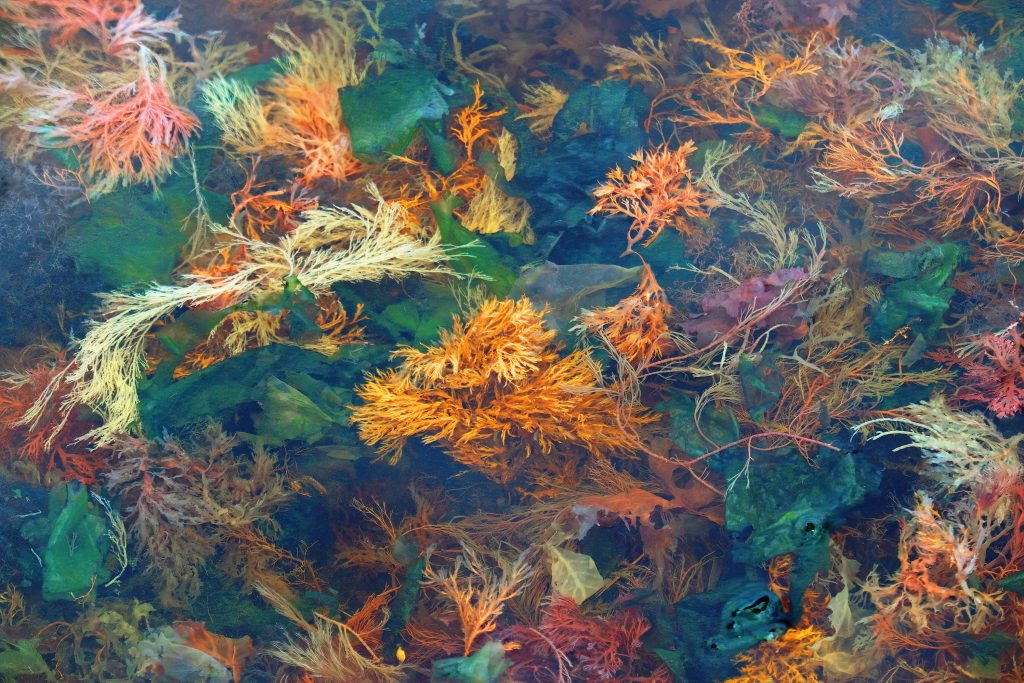The ocean is home to some of the most amazing forests in the world. Forests where you can float weightlessly among schools of fish. Huge green pastures where whales graze. Forests that can never catch fire, that capture carbon from the air and breathe out oxygen. The answers to many of our planet’s problems may lie under the water, too, hidden in these underwater forests of seaweed.
Our planet is changing. Human-caused pollution has altered Earth’s atmosphere and caused temperatures to warm. This global change affects the oceans even more than it affects the land. As the oceans get hotter, icecaps melt, currents veer off-course, weather patterns change. We’re feeling this already in rising sea levels, increased hurricanes that batter coasts, and droughts that cause deadly wildfires. Wildlife habitats are threatened, food shortages loom. There’s a lot of environmental bad news these days, a lot of dire problems ahead.
But there are solutions to be found under the waves.
No matter where you live—right by the ocean or far inland—seaweed affects you, and every human on this planet. We all need food to eat, water to drink, and air to breathe. Seaweed can give us all those things—and more.
There are thousands of species of seaweed, in a rainbow of colors: red Irish moss, brown rockweed, emerald kelp. Some look like plants, some look like rocks, and some look like piles of tangled string. Scientists have been arguing for centuries over exactly what these wet, weedy life forms are.
Seaweed looks like a plant, but it isn’t. Seaweed is neither plant nor animal nor fungus, but a whole separate form of life: algae. Most biologists use the general term “seaweed” for the plantlike structures of algae that live in salt water. There are three groups of algae, and they’re named for their colors: red, green, and brown.
Algae was the first form of life to evolve in the warm seas of the Earth. So seaweed was here billions of years ahead of ferns, moss, trees, or fungi. The first single-celled seaweeds were already an ancient life form billions of years before dinosaurs appeared. Sharks were swimming through seaweed millions of years before birds were singing in trees. And seaweed was lying on the beach millions of years before people arrived. Seaweed was here first, and it’s still around: whole forests of seaweed lie hidden under the ocean waves.
For more about seaweed, please check out my book The Forest in the Sea.

photo by Cheryl Rose





Recent Comments